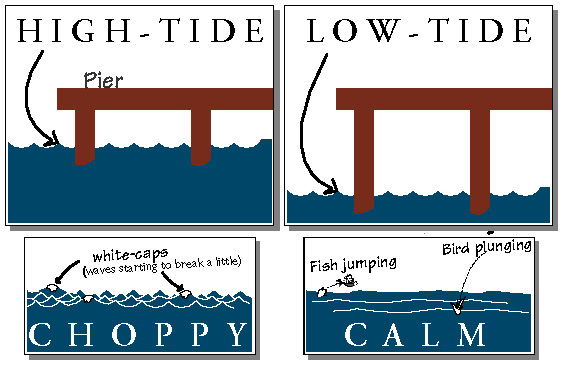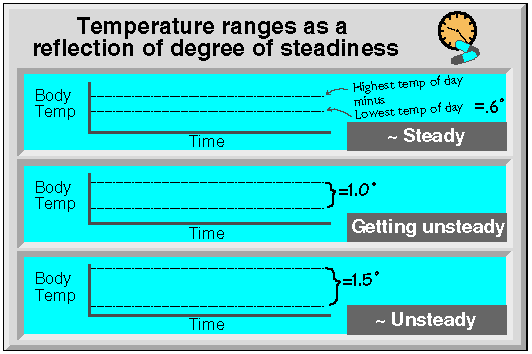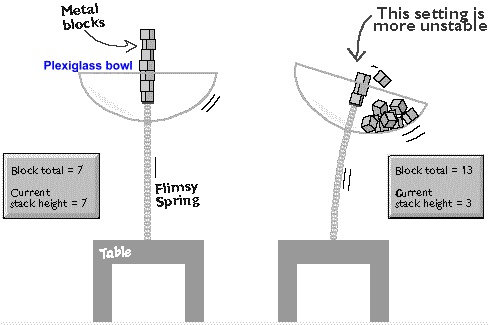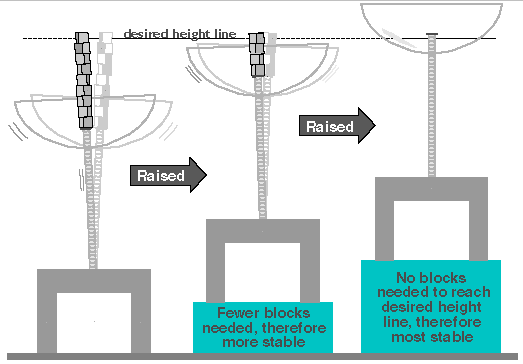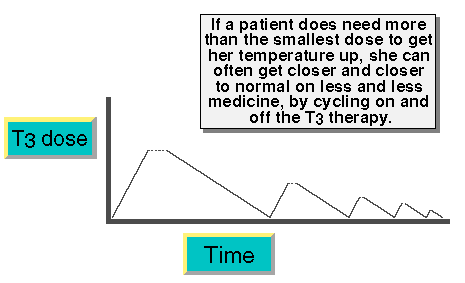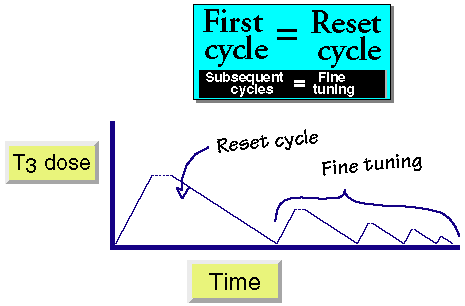Looking out over the ocean, it’s easy to tell whether it is high tide or low tide, and weather conditions are choppy or calm.
Body temperature patterns, as well as patient response, help guide T3 therapy. Thyroid blood tests do not direct therapy per se.
I recommend the patients take their temperatures 3 times during the day while on the treatment.
This gives three points on the curve, which gives one an idea of the steadiness of the body temperature patterns. I would prefer a 24-hour temperature map, but three oral temperatures is what I would consider a minimum. It’s difficult to have patients comply with more temperatures than 3.
One morning temperature does not give one a feel for the steadiness of the temperature patterns, nor really do two.
Patients well point out that we can’t make too much of these three temperatures because of possible variations in relation to meals, exercise, dosing of the T3, etc. But the way I view these temperature logs, is like the way one may view the ocean. Looking out over the ocean, one can tell whether it is high tide or low tide. One can also tell whether it is choppy or calm. And just because disturbances are made by a fish jumping, or by a bird plunging in, or by the wind blowing a whitecap onto the top of a swell, that doesn’t change it from being high tide or low tide, or in general, choppy or calm. I don’t make too much out of each individual temperature, but look more at the overall pattern to see how high the temperature is on average, and to get a feel for how steady it is.

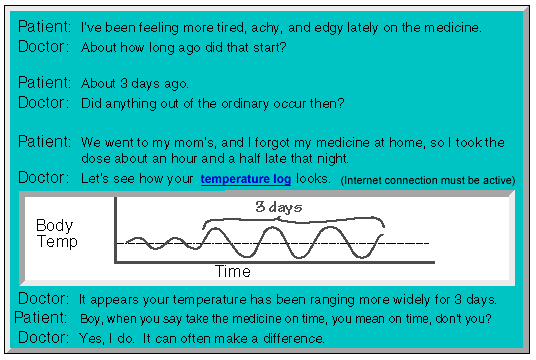
The above is a useful demonstration that helps improve compliance. It helps the patient see rather clearly the importance of taking the medicine properly, which otherwise would be a little hard to imagine. This kind of demonstration would not be possible without 3 temperatures or more per day.
I strongly advise the patients to take the medicine (liothyronine compounded with a sustained-release agent to be taken every 12 hours), every 12 hours to the minute, not even 3 minutes late, and to purchase a timer to make it easier.
Note: It is best to get the timers where one can set the interval rather than the time, so that it goes off every 12 hours without the patient having to reset the alarm each time (rather a pain). At this time, I know that Timex puts out a black rubber-type watch called the “Triathlete” that has this function for about $24.00. Also, Radio Shack sells a pillbox with a timer having this feature, by the brand name of Micronta for about $13.00.
We also sell a very handy vibrating timer with up to twelve alarms.
The more unsteady the T3 level, the wider the range of the temperature pattern. Although body temperature patterns are useful in comparing one person to another, they are even more useful in comparing one person to himself.
A temperature range (highest minus lowest) of about .6 degrees Fahrenheit is what I consider pretty steady. A range of 1 whole degree is getting to the point of being rather unsteady, and where symptoms more frequently begin. Ranges of 1.5 to 2.0 degrees frequently can be symptomatic, and rarely, I have seen patient’s temperatures range as much as 3 degrees.
Body temperature patterns are more useful in comparing one person to himself, than they are in comparing one person to another.
For example, one patient might enjoy a great improvement when her temperature improves from 96.5 to 97.8 degrees. But because another patient’s temperature is not below 97.8 does not mean that she will not benefit from the treatment, because her symptoms might resolve completely when her temperature improves from 98.0 to 98.6. I’ve had a few patients (very few, because usually patients temperatures are less than 98.0) who were symptomatic at 98.4 and whose symptoms resolved when their temperatures were raised to 98.6. Mild cases can sometimes take only on the order of days to correct, start to finish.
Also, one person with a temperature of 98.3 and a range of 1.0 degrees might not be feeling as improved as another person with a temperature averaging 98.0 with a range of 1.5 (who had improved from 97.0 degrees and a range of 1.5). But if the first person’s temperature improves to 98.6 with a range of .6 degrees she is likely to feel better than she did at 98.3 with a range of 1.0.
One of the reasons that steadiness is so important is that it appears that lower levels of T3 that are more steady can often provide greater T3 stimulation of the cell than higher levels that are more unsteady. Steadiness is everything.
Note: One example of this is when a patient is doing well for 6 weeks on a dose of 45 mcg BID. Then the patient misses the timing of his dosing significantly for a couple of days resulting in unsteady T3 levels and temperatures. Let’s say that in this case, his temperature drops from 98.6 down to about 97.8. He then increases his dose, but instead of his temperature returning to normal, it simply becomes more and more unsteady as he takes more and more T3.
It’s only after the patient weans off the T3 therapy (allowing the T3 levels to steady down) and then starts the T3 again that he is able to get his temperature back up to 98.6 on 45 mcg’s BID. This kind of crumbling of the temperature is rare, but it does happen.
Also, as alluded to previously, the higher the dose of exogenous T3, generally the more difficult it is to keep T3 levels steady.
Once unsteady, steadiness can often be regained without weaning off the T3 medicine (e.g, by increased compliance, or by a T4 test dose
As an analogy, suppose you were participating in a contest. The object is to carefully stack metal blocks so as to reach a certain height. The catch is that you must stack the blocks atop a small (2″ x 2″) platform mounted on the top end of a 3 foot long spring standing on end, and mounted to a table top.
Below the 2″ x 2″ platform , the spring passes through the center of a broad plexiglass bowl which is attached to the spring so that it forms a sort of “crow’s nest”. If done very carefully, you might be able to stack up 7 blocks.
The difficulty is that the more blocks that are stacked up, the more the spring tends to sway, and the more likely the blocks are to topple over. If the spring starts swaying a little, perhaps you may only be able to build up 4 or so blocks before they begin to topple over. So you might think, “I need to build it up higher than 4, so I’ll add more blocks.” But as the blocks topple over and fall into the bowl, more and more weight is added to the system, destabilizing it further if anything. So adding more blocks to a less stable system often doesn’t increase one’s chances of getting the stack any higher, and can actually decrease them. At that point, you may need to remove all the blocks, let the spring straighten up and settle down, and start again before having another good shot at stacking the blocks sufficiently high.
To further the analogy, let’s suppose that the contest is won by reaching the desired height while having the least amount of swaying (or displacement from vertical) of the spring and stack. But there is one rule that makes it easier: Once you are able to build the stack up to the desired level, you are allowed to remove all the blocks and start over. Except this time the tabletop is raised a few inches so fewer blocks will be needed to reach the height line. With fewer blocks there will tend to be less swaying//displacement. And if you reach the height line again you can start over again, with the table being raised another few inches. And so on, until perhaps the spring reaches the height line all by itself. With no blocks there would be the least swaying/displacement of all.
Likewise, the smaller the dose of T3, the easier it is to keep the T3 levels steady.
And the patients who always do the best on T3 therapy are those patients who are lucky enough to get their temperatures up on the smallest dose of T3, whether on the first cycle, or a subsequent one.
The greater the proportion, at any given time, of a patient’s T3 level that is exogenous (from the medicine) the more difficult it is to keep the T3 level steady.
Patients that are lucky enough to get their temperature up on a smaller amount of exogenous T3, have T3 levels made up of a greater proportion of endogenous (from the body) T3, which is more steady. So they have normal temperatures, and very steady levels of T3, which is a very good combination.
The best combination is to have normal temperatures with a T3 level that is 100% endogenous (endogenously steady), which is the goal of treatment.
Some patients may need more at first, but they can always wean off the medicine and start it again. And each time they do they generally need less medicine. In this way they can often get on less and less medicine until they’re done.
As mentioned previously, this goal is accomplished by passing the thyroid system from endogenous control to exogenous control, and then back again (once or more than once).
Some patients may need more than the smallest dose of the T3 therapy to get their temperatures up, so the T3 can be gradually increased until their temperatures are normal.
But, for reasons discussed previously, if a patient does need more T3 on previous cycles to achieve a normal temperature, she can often wean gradually off the T3 therapy, and require less on subsequent ones (easier to keep steady). This is likened to the tabletop being raised a few inches when the blocks are removed to start over.
Thus, by cycling from endogenous to exogenous and back again, a patient can often get closer and closer to normal (T3 preponderance and normal temperatures) on less and less medicine until her temperatures remain normal and her symptoms remain improved even after the treatment has been discontinued completely.
Note: Since the higher the doses of T3 the harder it is to keep the T3 levels steady, we want to balance between two principles: the need to give more T3 to reset things, and the need to give less T3 so that it’s easier to keep T3 levels steady. Fortunately, one can usually get to the point of using less T3 by resetting things through this process of cycling the T3 therapy.
Sometimes patients need to take more T3 before they can do well on less. In such cases, much of the corrective work is frequently done in the first cycle. For this reason I commonly refer to the first cycle as the “reset” cycle, and the subsequent cycles as “fine-tuning.”
The above is likened to it being a little harder to reach the height line on the first cycle, because the table is so low; but once the height line is held the first time (temperature captured), the table is raised, so it tends to get easier and easier on subsequent tries.
Since more medicine is commonly used in the first cycle, there is a little greater chance for the patient to experience side effects of T3 unsteadiness.
In longer-standing, more severe cases, patients may not notice much if any improvement on the first cycle. This is why I consider a therapeutic trial to be at least 2 cycles.
Such patients will often notice that half as much medicine the second time around can sometimes bring their temperature up and improve their symptoms when twice as much never could the first time.
It’s harder to be as optimistic after two cycles of T3 with no change, but if the patient is not having any complaints, trying more than two cycles can sometimes pay off. In the case of one patient, we both felt that there was a good chance we were on the right track and couldn’t think of anything better to try, so she went up and down on the medicine 11 times. On the 11th cycle her temperature finally came up, with her symptoms improving.

